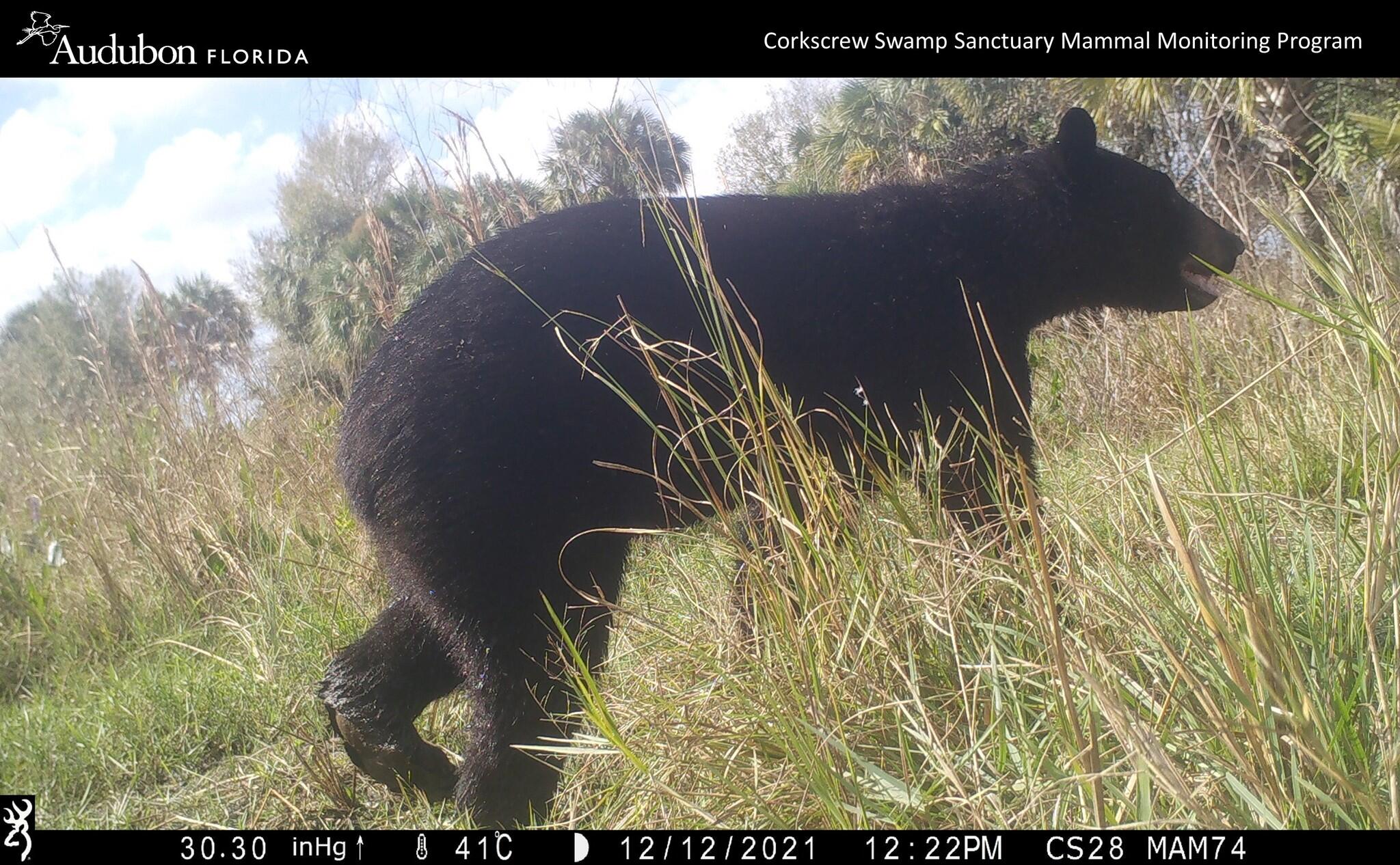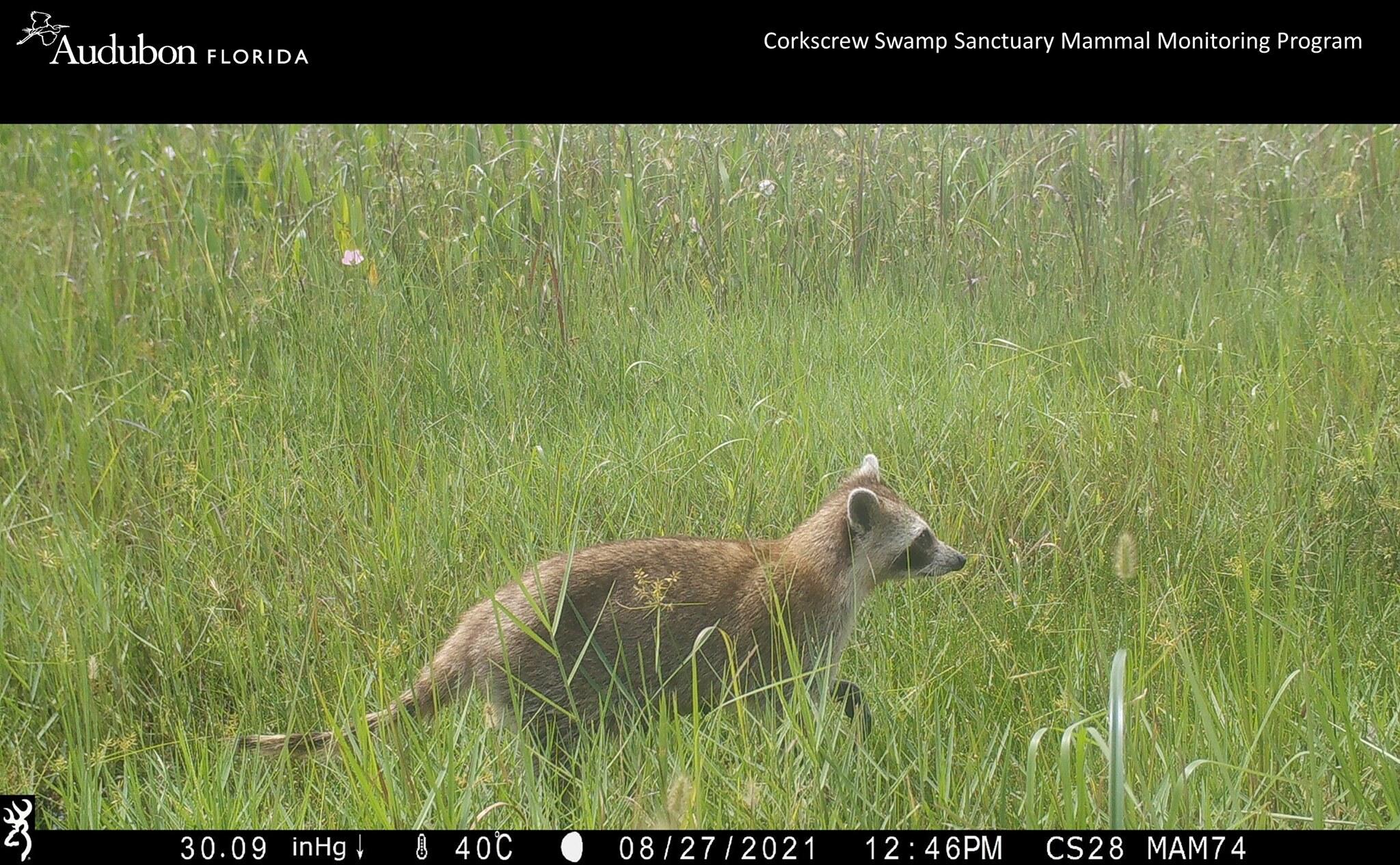Background
Audubon staff use camera traps for ongoing monitoring of mammal populations in the Sanctuary. With the help of interns and volunteers, staff conducted a study of the images from 2013 to 2019 to establish baseline data on mammals living within the Sanctuary. Over the course of six years, the cameras collected more than 930,000 photos, providing information on 18 species and their habitat preferences over time.
Motion-sensor trail cameras are mounted approximately one meter above the ground, angled downward. They are set to collect bursts of three to four photos whenever something moves near enough to trigger the sensor.
Findings
All medium and large mammal species native to this region were documented. White-tailed deer were detected most frequently, followed by Virginia opossum, raccoon, and rabbit. Four species, Florida panther, bobcat, coyote, and opossum, were observed primarily in hammocks in the dry season, while white-tailed deer showed up in pine flatwoods in the wet season, potentially indicating predator avoidance.
Overall, the numbers of medium and large mammals have increased over time. While large mammals such as deer and raccoons easily trigger the camera traps, the team is looking into a better monitoring plan for smaller mammals, such as mice, rats, and the elusive Everglades mink, which do not trigger the cameras as easily.
Why This Matters
Establishing this baseline description of mammal communities will guide habitat stewardship activities, such as restoration and prescribed fire. Another benefit? Knowing if and how Burmese pythons or other invasive snakes are impacting the Sanctuary.
Because mammals make up the majority of a Burmese python’s diet, locations where pythons have been plentiful are typically devoid of mammals. These data are useful for understanding what the mammal population should look like in a location like the Sanctuary, where the invasive snakes have not yet had any detectable impact. While Burmese pythons have been found nearby, they have not been recorded in the Sanctuary so far.
If and when invasive snakes do appear, our conservation team has developed an invasive snake response plan and received extensive training on snake identification and capture methods.
Slideshow!








